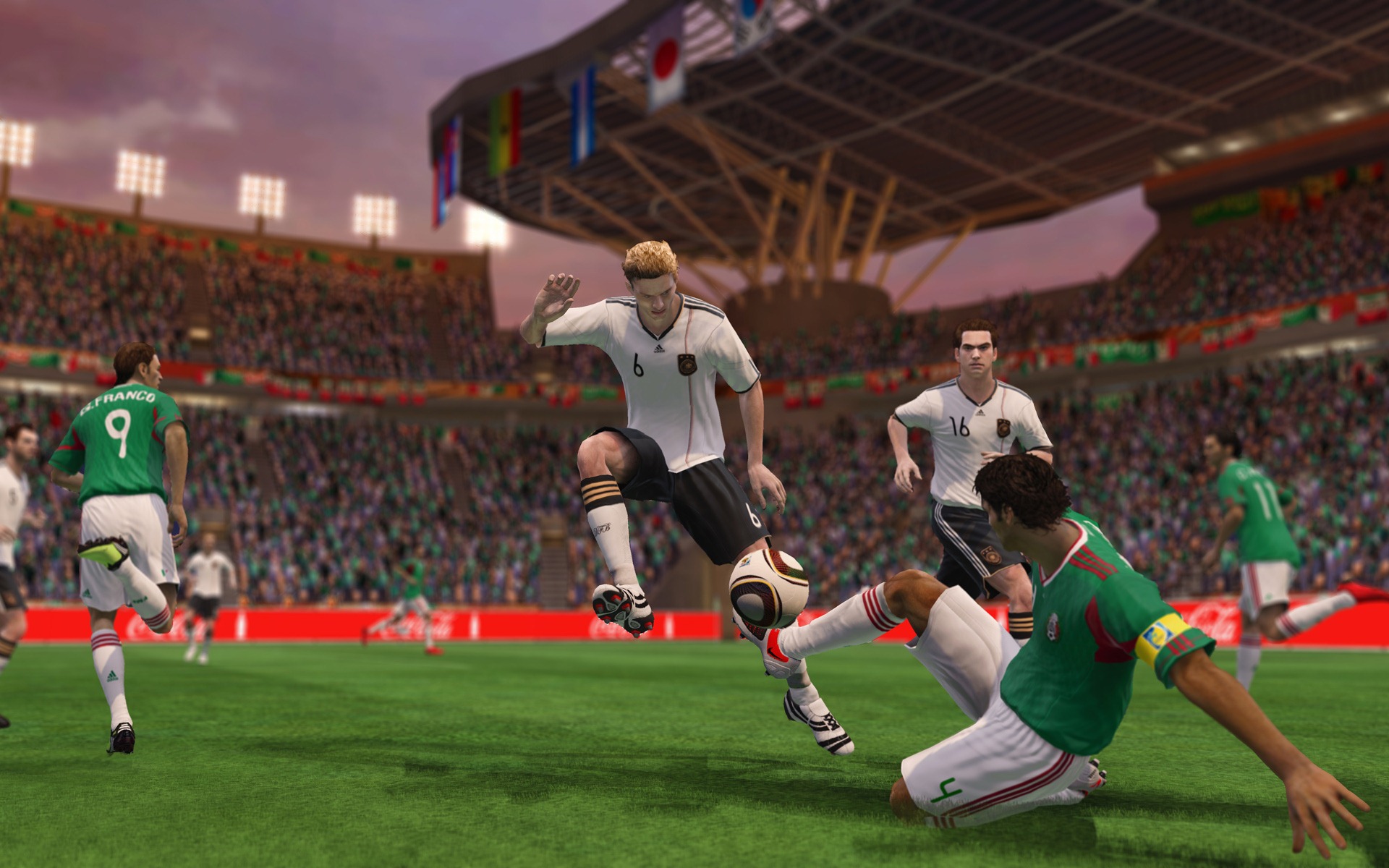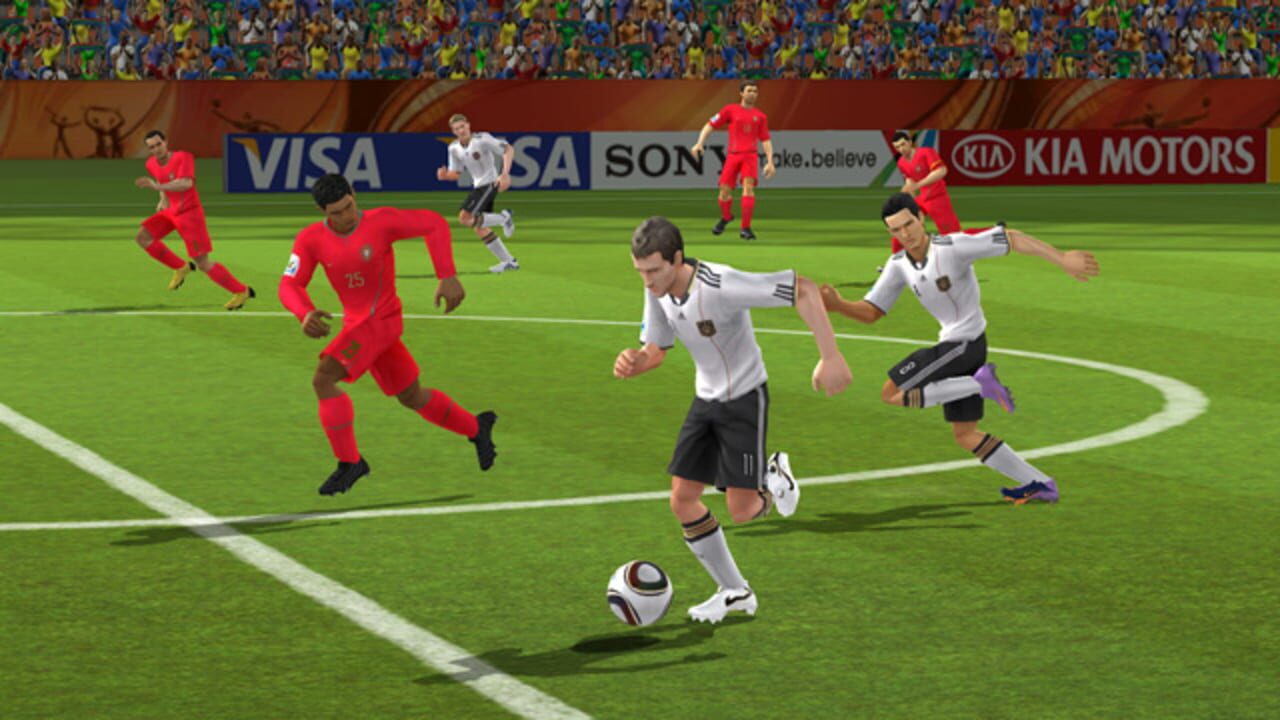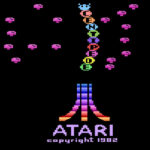EA Sports FC (formerly known as FIFA Football or FIFA) is a series of association football video games developed and released annually by Electronic Arts under the EA Sports label. As of 2011, the FIFA franchise has been localised into 18 languages and available in 51 countries. Listed in Guinness World Records as the best-selling sports video game franchise in the world, the FIFA series has sold over 325 million copies as of 2021. On 10 May 2022, it was announced that EA and FIFA’s partnership is set to come to an end after 30 years from July 2023 onwards; the series will be retitled EA Sports FC. FIFA intends to enter a partnership with a new developer to produce “the real game that has the FIFA name”. (Source from Wikipedia)

Football video games such as Tehkan World Cup, Sensible Soccer, Kick Off and Match Day had been developed since the late 1980s, and were already competitive in the games market when EA Sports announced a football game as the next addition to their EA Sports label. When the series began with FIFA International Soccer on the Sega Mega Drive in late 1993, it was notable for being the first to have an official license from FIFA, the world governing body of football. The main series has been complemented by additional installments based on single major tournaments, such as the FIFA World Cup, UEFA Champions League, UEFA Europa League and UEFA European Football Championship, as well as a series of football management titles. Since the 1990s, the franchise’s main competitor has been Konami’s Pro Evolution Soccer (PES) series (now known as eFootball).


FIFA International soccer (1990)
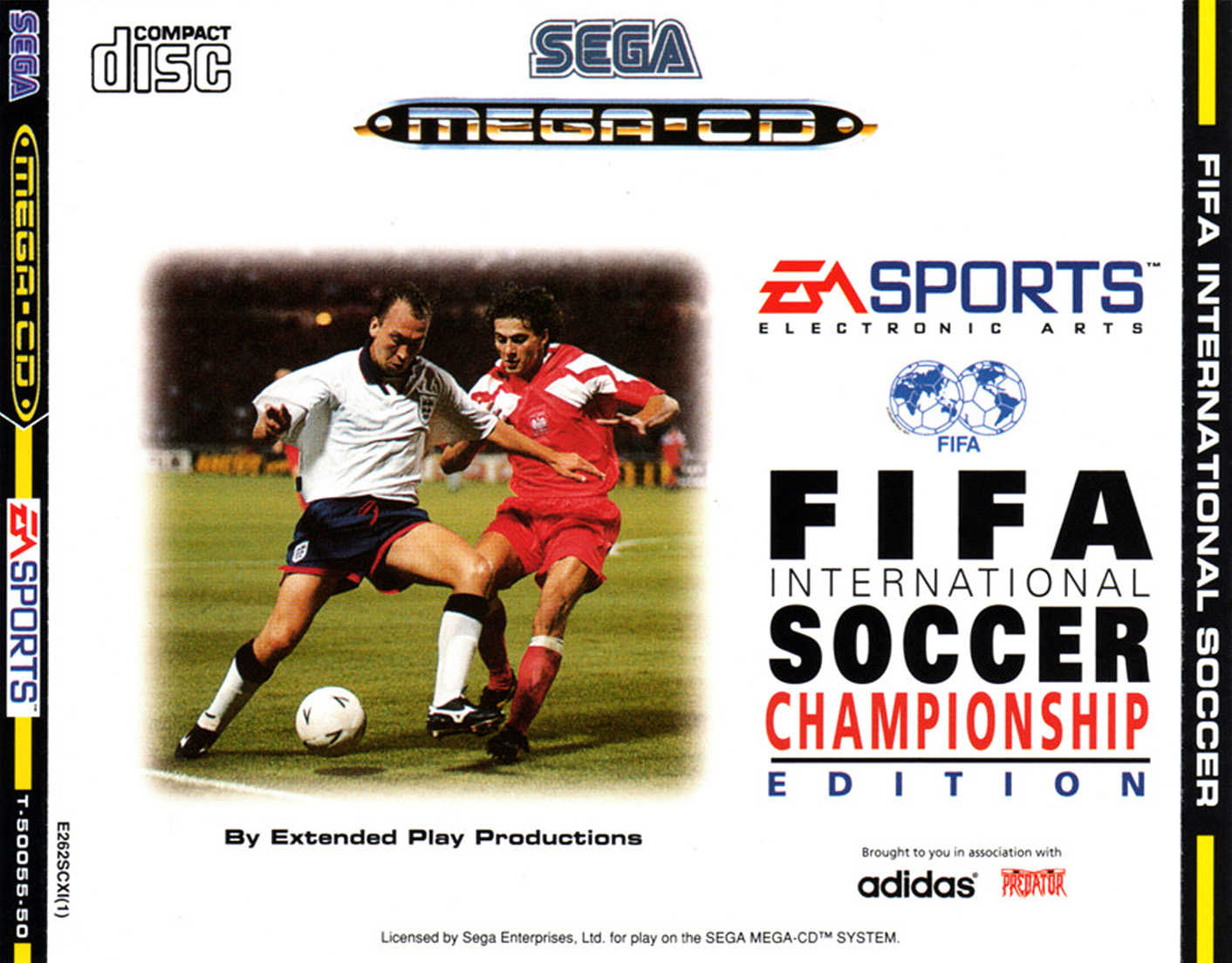
Known as EA Soccer during development and sometimes subsequently also known as FIFA ’94, the first game in the series was released for the Sega Mega Drive in the weeks leading up to Christmas 1993. This greatly hyped football title broke with traditional 16-bit era games by presenting an isometric view rather than the more usual top-down view (Kick Off), side view (European Club Soccer), or bird’s eye view (Tehkan World Cup and Sensible Soccer). It only includes national teams, and real player names are not used. A notorious bug allows the player to score by standing in front of the goalkeeper so that the ball rebounds off him into the net.


fifa 95 (1995)

Using the same engine with only minor touch-ups, FIFA 95 introduced club teams to the series within eight national leagues: Brazil, Germany’s Bundesliga, Italy’s Serie A, Spain’s La Liga, England’s Premier League, France’s Ligue 1, Netherlands’ Eredivisie and the United States. Most of the leagues have team lineups based on the 1993–94 season, and the teams, although recognisably real, all still have generic players, many of them even returning from the previous game. The USA League consists of teams and players from the A-League, the country’s second division – subsequent editions would feature “artificial” division one leagues, a feature not corrected until the 2000 edition, when Major League Soccer was included for the first time. In addition, the Brazilian league contained only teams from São Paulo and Rio de Janeiro states, with the exception of Internacional, from Rio Grande do Sul—it would not be until FIFA 07 that Campeonato Brasileiro represented the country. The game eliminates the one-touch passing seen in the original FIFA International Soccer. This was also the only game in the main series not to be released in more than one platform (counting spin-offs, only FIFA 64 and certain versions of the FIFA Manager series share this distinction).

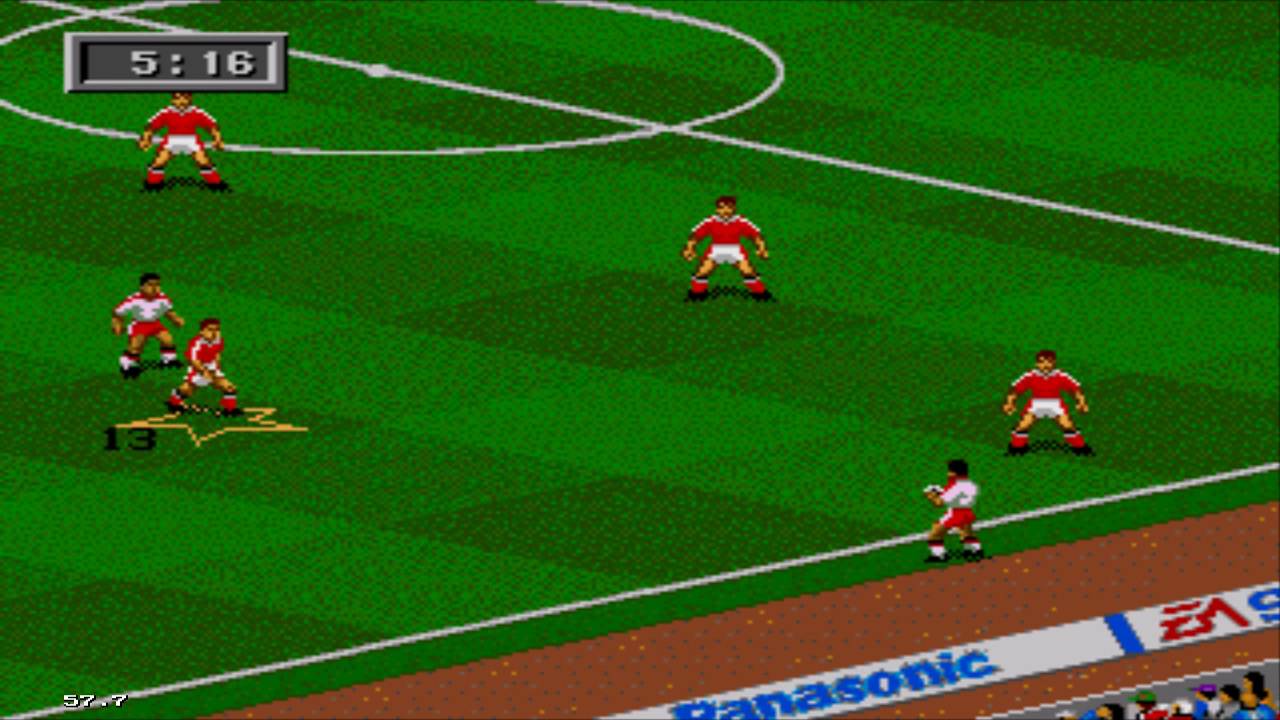

FIFA 96 (1996)

This is the first FIFA game to feature real-time 3D graphics on the Sega Saturn, PlayStation and PC versions, using technology called “Virtual Stadium”. It is also the first in the series to present players with real player names and positions, with ranking, transfer and team customisation tools. However, the Brazilian teams had mostly inaccurate rosters, some of them even featuring long-retired players (this would only be corrected in FIFA 99), and the American league consisted of entirely fictitious teams and rosters (Major League Soccer had been inaugurated for only a few months as of the game’s release, but it would only start to appear in the games as of FIFA 2000). The SNES and Mega Drive versions use an updated version of FIFA 95′s engine with new teams and graphics. It is also the first FIFA game to contain a player/team editor (in the Mega Drive and fifth-generation versions only). Also, in addition to the eight national leagues of the previous game, three leagues debuted in the game: Scottish Football League Premier Division, Allsvenskan and Super League Malaysia, a lineup that would stay for the next two editions as well. This was also the first FIFA game to have a proper introduction.

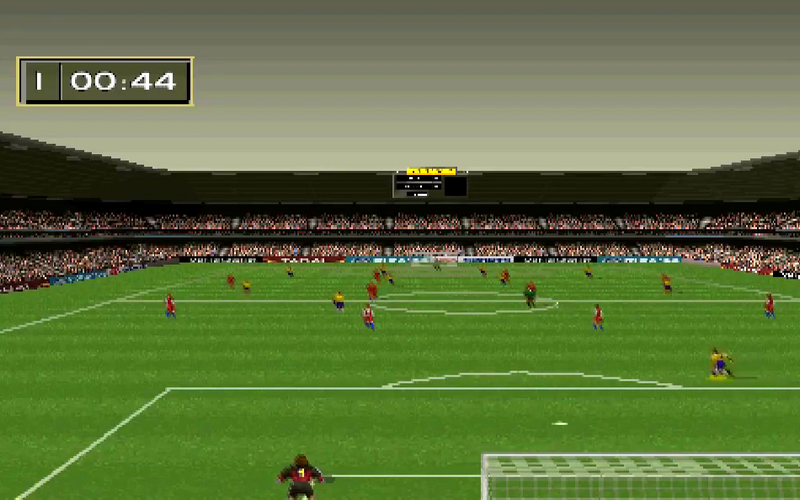

FIFA 97 (1997)
The biggest change in FIFA ’97 was the inclusion of 6-a-side indoor soccer mode and polygonal players, with motion capture provided by David Ginola. The game features a much higher number of playable leagues from England, Spain, France, Italy, the Netherlands, Germany and Malaysia. These versions also feature commentary by John Motson, partnered by Andy Gray, with Des Lynam introducing the matches.
FIFA - ROAD TO WORLDCUP 98

This game marks the start of an upward trend in the series. It boasts a refined graphics engine, team and player customisation options, 16 stadia, improved artificial intelligence, a “Road to World Cup” mode with all FIFA-registered national teams, and a licensed soundtrack featuring popular musical artists of the time. The game features many accurate team squads for national call up when playing in the round robin qualification modes. Another new feature was the ability to manually change the referee’s strictness, allowing some fouls to go un-noticed or without punishment.
Additionally, for the first time in a FIFA game, the offside rule is properly implemented. In previous games, when a player was in an offside position doing anything except running, that player was penalised for offside even when the ball was passed backwards. The 32-bit version of FIFA 98 corrects this so that the game would only award a free kick for offside if the ball was passed roughly to where the player in the offside position was.
FIFA 98 was also the first of the series to feature a licensed soundtrack, with “Song 2” by Blur used as the intro track for the game. It was the last FIFA game to be released on the 16-bit consoles that the series had originated on.



FIFA 2000

This title had a new graphics engine from FIFA Soccer World Championship which allows each team to have its own detailed kit, and for some players, their own unique faces. Doing away with ordinary coloured pennants as club emblems, the license includes official club emblems for the first time, although certain leagues, like the Dutch league, are unlicensed. Slightly tweakable physics made the game a modding favorite for its fan community. The game also includes the entire Austrian Bundesliga and Korean K-League as playable leagues for the first time, albeit removing the Portuguese Liga and the Turkish Premier League. A “hack” feature is included, where the player can press R1 to attempt an intentional foul, such a high sliding tackle. This title was the first game of the series with a power bar for shooting (such a feature already existed in the Super NES version of the first game, but it was not in all versions of the game). FIFA 2001 was the first version (for the PC) that could be played online, which was revolutionary, and the first game in the franchise on a 6th generation video game console in USA and Europe.



FIFA 2002 - 2005

For FIFA Football 2002, power bars for passes were introduced, and dribbling reduced in order to attain a higher challenge level. The power bar can also be customised to suit the gamer’s preference. The game also includes club emblems for many more European clubs as well as for major Dutch clubs such as PSV, Ajax and Feyenoord, although there was no Dutch league of any kind (they were under the “Rest of World” header). This game also features, for the first time, the Swiss Super League, at the cost of excluding the Greek League. A card reward system licensed from Panini was also introduced where, after winning a particular competition, a star player card is unlocked. There is also a bonus game with the nations that had automatically qualified for the 2002 World Cup (France, Japan and South Korea), in which the player tries to improve the FIFA ranking of their chosen team by participating in international friendlies. Playing with other national teams will allow the player to play through their respective zones’ qualifying rounds (except for Oceania and Africa, whose confederations are not represented in full).

FIFA Football 2003 added features completely new gameplay from the previous titles. EA revamped the outdated DirectX 7 graphics used in FIFA 2001 and 2002, and introduced new graphics featuring more detailed stadia, players, and kits. Club Championship Mode was introduced with the feature of playing against 17 of Europe’s top clubs in their own stadia and the fans singing their unique chants and songs. A TV-style broadcast package gave highlights at half-time and full-time, as well as comprehensive analysis. One of the most anticipated new features was EA Sport’s “Freestyle Control” which allows the user to flick the ball on and lay it off to teammates. Other additions include greater likenesses of players such as Thierry Henry and Ronaldinho, as well as realistic player responses. An Xbox version was added to the Windows and PlayStation 2, whereas the original PlayStation version was dropped. FIFA Football 2003 was also the first game in the series to use the EA Trax. EA Trax is the exclusive music menu system that has been used ever since in all FIFA titles.

While not adding much to the game engine, the biggest new inclusion in FIFA Football 2004 is secondary divisions, which allow the player to take lower ranked teams into the top leagues and competitions (a promotion/relegation system was present since the 2000 edition, but none up until this one featured second-tier leagues). A new gameplay feature dubbed “off the ball” was introduced, which is the ability to simultaneously control two players, in order, for example, to move a second player into the box in anticipation of a pass. The online mode was touted as the main feature. Another key feature is “Football Fusion”, which allows owners of both FIFA 2004 and Total Club Manager 2004 to play games from TCM in FIFA 2004. This is also the first FIFA game to feature Latin American club teams aside from those of the Brazilian League; there are four from Mexico (América, Toluca, Monterrey and UNAM; a fifth team, Tigres UANL, is present only in the Game Boy Advance version) and two from Argentina (Boca Juniors and River Plate). The title sequence, featuring Ronaldinho, Thierry Henry and Alessandro Del Piero, was filmed at St James’ Park, the home ground of Newcastle United.
FIFA Football 2005 was released much earlier than the usual late October date to obtain a head start over Pro Evolution Soccer 4 and avoid clashing with EA Sports’ own FIFA Street. The game features the return of the create-a-player mode, as well as an improved Career mode. The biggest difference compared to previous titles in the series is the inclusion of first-touch gameplay which provides gamers with the ability to perform real-life tricks and passes. It is also the first version to feature the full Mexican League. The game has no opening video, but its soundtrack is headlined by British DJ Paul Oakenfold, who composed the FIFA Theme especially for the game, using some sounds from the game such as artificial crowd noise and commentary. This was the last title released for the original PlayStation in the US. The game also features authentic crowd chants edited by producer Dan Motut.


FIFA 2006 - 2010

One of the new features in FIFA 06 was a special “retro” which features nostalgia of the game. Inside it includes an unlockable classic biographies section, a memorable moments video compilation, which features ten of the most memorable moments as judged by the FIFA 06 developers, a video compilation with a retrospective view of every game in the FIFA series and the chance to play the first ever game in the FIFA series which was titled as “FIFA 94”. The game also features for the first time a Classic XI team consisting of great football legends and a World XI team consisting of current great superstars. Both teams have the Cardiff Millennium Stadium as their primary ground. These clubs must be unlocked in the “Fan Shop”.

The main differences from the previous game are a new “Interactive Leagues” function, new stadia such as the new Wembley Stadium and Emirates Stadium, and the ability to create custom teams and Turkcell Super League returns after seven years of absence from the series. The game’s front-end and graphics engine remain largely the same. The Xbox 360 version uses a completely new game engine which was created from scratch for the system. This Xbox 360 version also features a much reduced team line-up, completely removing all lower division teams and focusing on the four main European leagues, plus the Mexican Clausura and national teams. This was the last title released for the GameCube, Xbox and Game Boy Advance.
FIFA 08 introduced a new game mode called “Be a Pro”, in which the player controls only a single player on the field. This version also introduced a larger club section including the League of Ireland, and the Hyundai A-League of Australia, for the first time. Unlike FIFA 06 and 07 however, FIFA 08 does not include any memorable moments or season highlights. This edition introduced the Practice Arena Feature that allowed training and improving the dribbling, shooting, or practicing free kicks and penalties while on the practice pitch.
It was the first game in the franchise for PlayStation 3 and Wii, the latter introducing motion controls for shooting, as well as three mini-games that make use of the Wii Remote.
FIFA 09 features a revamped collision system and an option for 10 versus 10 “Be a Pro” online matches, and the new “Adidas Live Season” feature, which updates all the players’ stats in a particular league based on the player’s form in real life. Although the feature is activated through microtransactions, gamers have access to one free league of their choice from the moment they activate the service to the end of the 2008–09 season. Online play has also been improved in FIFA 09, with a feature called “FIFA 09 Clubs” allowing players to form or join clubs and field their strongest team online. The game is the first in the FIFA series to feature user-controlled goal celebrations. FIFA 09 has met with generally positive reception from reviewers.

FIFA 10 has an extended Manager Mode which includes a new Assistant Manager that can be used to take care of the team’s line-up and to rotate the squad based on importance of the upcoming match and improved finances. The “Player Experience and Growth System” has changed. Player growth will now be determined by in-game performance, demands placed on the player, and achievements based on the player’s particular position. The games also features 50 stadia and 31 leagues, among which the Russian Premier League is introduced to the series (except for the PlayStation 3 and Xbox 360 versions). It also includes 360 degrees player control instead of the 8-direction control in previous games.


